The European Union and Serbia began the membership negotiations in December 2015 that will allow Serbia to join the EU in 2020 by opening the first two chapters: Chapter 32 for the financial control and Chapter 35 “Other Issues, Item 1” regarding the normalization of relations between Serbia and Kosovo.
Out of the most important highlights, it was evident that the full accession of the country in the EU will be a long journey as many reforms are required from the Serbian side. From the EU perspective, a crucial step appears to be the recognition of Kosovo from Serbia for the continuation of the negotiations.
The Prime Minister of Serbia, Aleksandar Vucic, stated that Serbia’s goal is to fulfil its membership criteria by 2019, while also maintaining the traditionally good relations with Russia.
Towards this direction, the European Commissioner for Neighborhood Policy and Enlargement Negotiations, Mr Johannes Hahn, congratulated Serbia’s accomplishments. However, he stressed out that Serbia should focus its efforts on the development of its strategy to reassure an alignment with the EU legislation and that “there is no speed or any other limit, only a certain road which a candidate must navigate through”(Delegation of the European Union to the Republic of Serbia, December 2015).
Background
For the first time, the case of Serbia as a potential candidate member was discussed in 2003 during the Thessaloniki European Council summit. In 2012, the country was granted the status of candidacy and one year later, the European Council started the negotiations with Serbia and agreed on the negotiating framework.
Chapter 35 and the normalisation of the Kosovo-Serbia relations
The normalisation of the relations between Kosovo and Serbia is a top priority set by the EU Enlargement Strategy for good neighbourly relations and regional cooperation.
As specified in paragraph 9 of the EU’s Accession Document for Serbia, the progress in the relations of the latter with Kosovo will be an essential factor for advancing both countries future as full-fledged members of the EU (Conference on Accession to the European Union- Serbia, January 2014). Thus, Serbia is expected to implement all the agreements in the dialogue with Kosovo by resolving any outstanding issues with legal and technical matters as well as by respecting the principles of regional cooperation.
Following the release of the Commission’s staff work document for Serbia’s 2015 Report, it is acknowledged that the mutual engagement of Kosovo and Serbia in the implementation of their agreements had a positive impact on the everyday life of their citizens.
From the EU’s perspective
In the context of the Stabilisation and Association Process of the EU’s Enlargement Policy, many countries of the Western Balkans have been granted the status of EU membership. This region, including Serbia, has been a witness of many recent conflicts and thus an EU membership status has been considered the key for stabilisation and the maintenance of good neighbourly relations.
What’s more, the current refugee crisis with hundreds of thousands of third-country nationals transiting Western Balkans and Turkey urges the need for regional cooperation. Only in Serbia, it is estimated that more than 200,000 refugees entered its territory.
The role of Serbia itself is considered as of great strategic importance for the regional cooperation and for the stability in Western Balkans. With the current recession in Greece and the ongoing migrant crisis, Eric Maurice in his article, published in Euobserver, reiterates that by “anchoring Serbia to the EU has become a geopolitical issue”. (Kosovo agreement clears Serbia’s EU path, EU Observer 2015).
The accession negotiations will be a long journey
Serbia’s accession in the EU will be a long process that “could drag on for years… due to economic crisis and enlargement fatigue in member states” (Eric Maurice; EU Observer, August 2015). Currently, the economic challenges facing the Western Balkan countries will require radical economic reforms in the region: high rate of unemployment, lack of industrialisation, corruption and lack of investment are some examples.
For Serbia, remarkable progress has been made in the financial sector by dropping its unemployment rate and reducing the budget deficit. However, some sectors remain problematic with the publicly owned companies needing further restructure and the private sector further development.
Additionally, the EU’s enlargement policy promotes steady progress in the accession negotiations of each candidate country. As outlined in the Commission’s Communication paper for the EU Enlargement Strategy, “enlargement is a strict but fair process builds on established criteria and lessons learned from the past” and that “each country is assessed on the basis of its own merit”. (EU Enlargement Strategy November 2015).
Photo: Balkan Photos, EU Serbia (2018). Source: (flickr.com) | (CC0 1.0)
Bibliography
Delegation of the European Union to the Republic of Serbia (2015) EU Opens First Chapters within Serbia Membership Negotiations, December 2015, Available at: http://europa.rs/eng/eu-opens-first-chapters-within-serbia-membership-negotiatons/ (Accessed 20 January 2015)
European Commission (2015) Commission Staff Work Document, EU Enlargement Strategy, Serbia 2015 Report, November 2015, Available at: http://ec.europa.eu/enlargement/pdf/key_documents/2015/20151110_report_serbia.pdf(Accessed 20 January 2016)
European Commission (2015) Communication from the Commission to the European Parliament, the Council, the European Economic and Social Committee and the Committee of the Regions, EU Enlargement Strategy, November 2015, Available at: http://ec.europa.eu/enlargement/pdf/key_documents/2015/20151110_strategy_paper_en.pdf(Accessed 20 January 2016)
European Commission (2015) Serbia, EU Neighbourhood Policy and Enlargement Negotiations, Countries, 18 December, Available at: http://ec.europa.eu/enlargement/countries/detailed-country-information/serbia/index_en.htm(Accessed 20 January 2016)
European Council (2014) Accession Document, Conference on Accession to the European Union -Serbia, January 2014, Available at: http://register.consilium.europa.eu/doc/srv?l=EN&t=PDF&gc=true&sc=false&f=AD%201%202014%20INIT (Accessed 20 January 2016)
European Council (2012) European Council 1/2 March 2012, Conclusions, May 2012, Available at: http://www.consilium.europa.eu/uedocs/cms_data/docs/pressdata/en/ec/128520.pdf (Accessed 20 January 2016)
Maurice E. (2015) Kosovo agreement clears Serbia’s EU path, Euobserver, 27 August, Available at: https://euobserver.com/enlargement/130008 (Accessed 20 January 2016)
Poznatov M. (2015) Opening of chapters a historic step for Serbia, EurActiv.com, 18 December, Available at: http://www.euractiv.com/sections/enlargement/opening-chapters-historic-step-serbia-320597 (Accessed 20 January 2015)

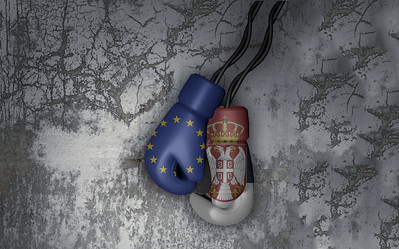
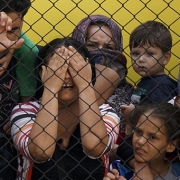
 176th Wing Alaska Air National Guard's photostream
176th Wing Alaska Air National Guard's photostream 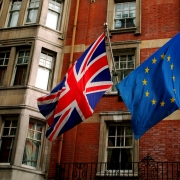
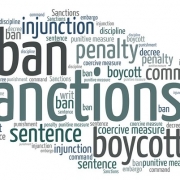
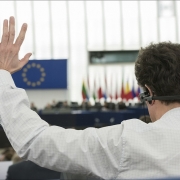



Leave a Reply
Want to join the discussion?Feel free to contribute!